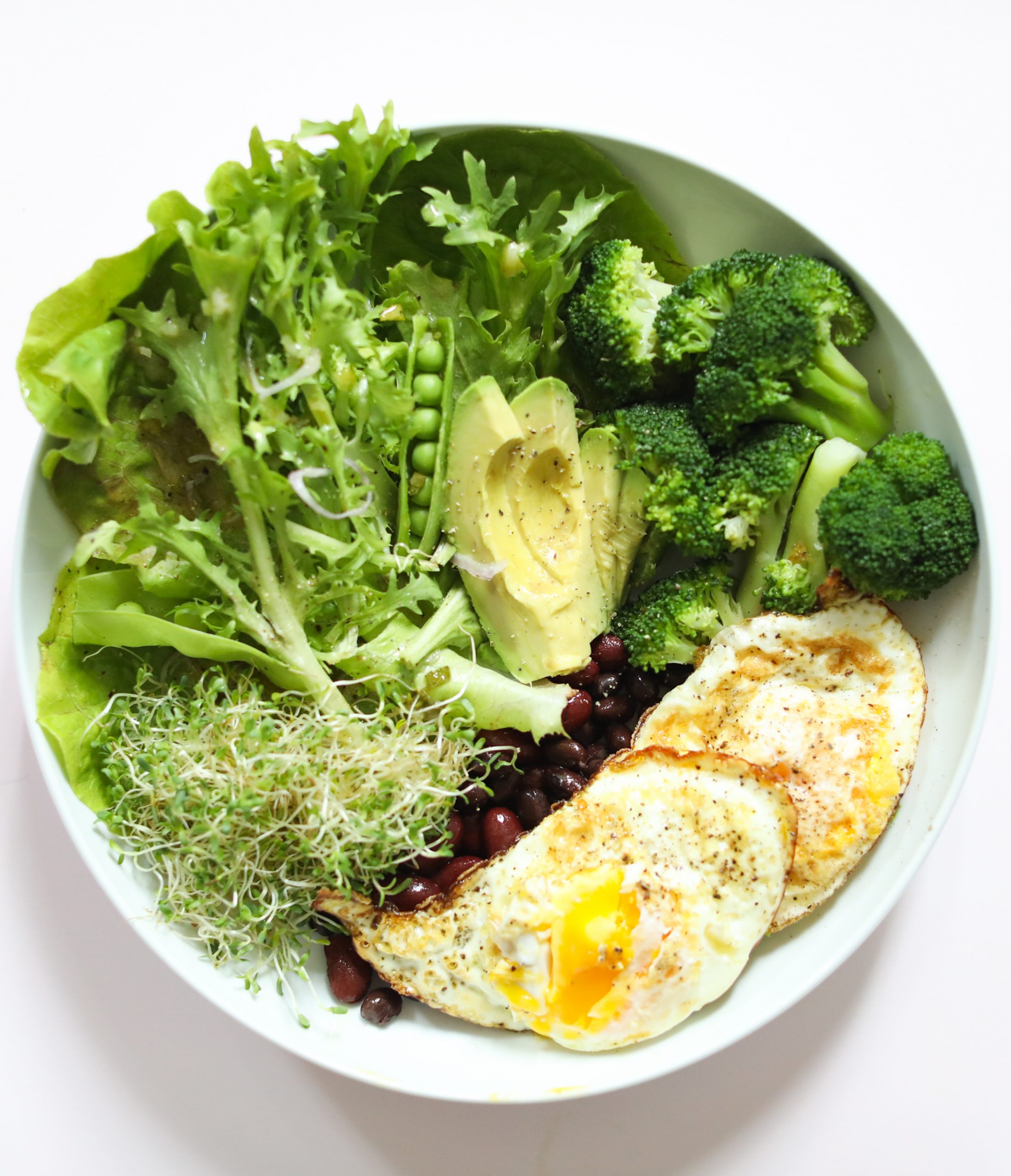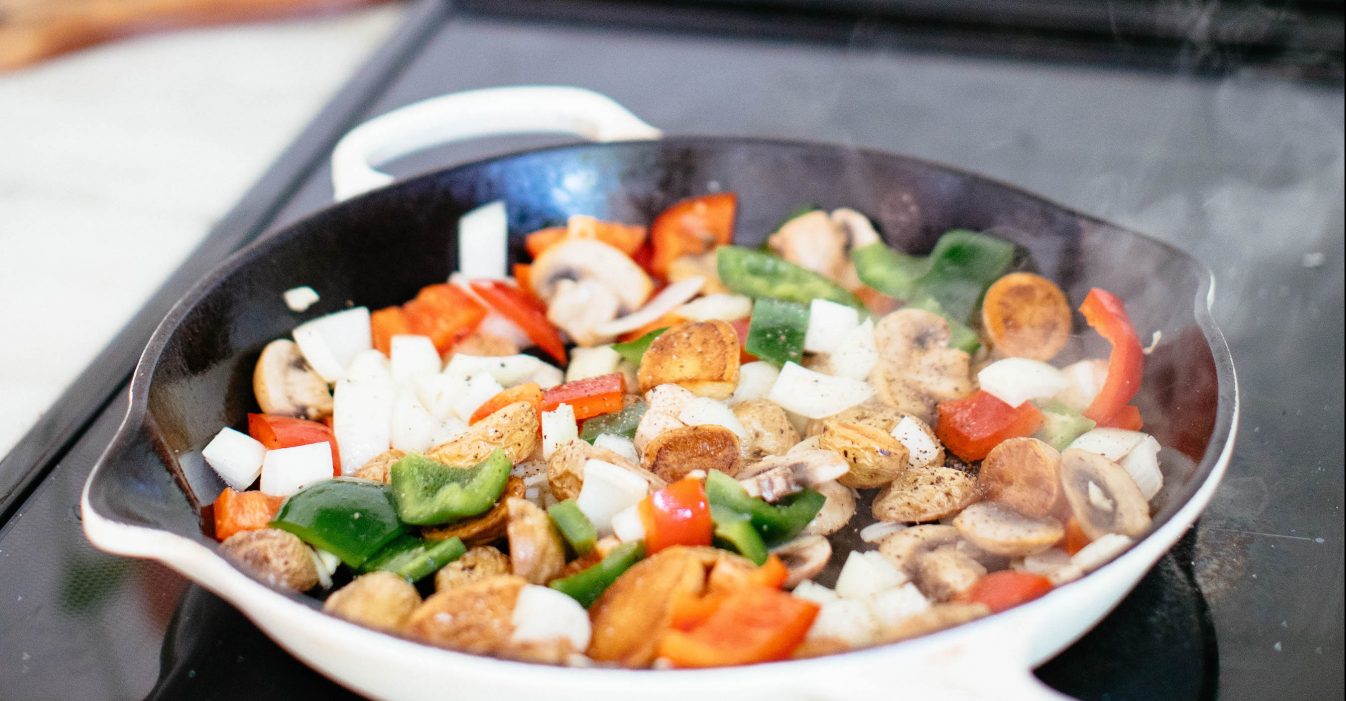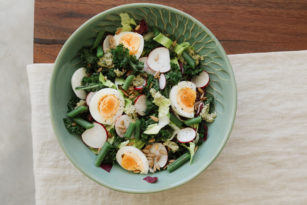Do you ever find yourself just steaming some vegetables or throwing together a simple salad and finding that it’s really not that delicious, flavorful, and satisfying meal you were hoping for?
Sometimes when we’re first really learning to master the art of cooking plant-based meals, this can happen. Making your vegetables taste good is key for eating well!
But the more you understand tastes and flavor profiles, the less likely you are to experience this sense of fatigue or blandness in the kitchen.
Understanding how to balance, enhance and layer tastes to create complex flavor profiles gives you the power you need to alter, adjust and create all the recipes you need!
These tips are super easy and beginner-friendly so that you can start using them right away!
I’m going to give you a few simple tips for cooking plant-based foods so you can be the head chef of your own kitchen!
There’s a few simple hacks I’m excited to share with you in this video that can help you make really delicious, plant-centric meals.
How to Make Vegetables Taste Good and Make Delicious Nourishing Meals
At Nutrition Stripped, we follow a mindful eating approaching. One aspect of mindful eating is enjoying your food. That means both having the freedom to enjoy all foods and also finding joy and pleasure when eating nourishing foods like vegetables.
So these are a few simple tips to help you make vegetables taste good to your preferences, so you can both nourish yourself and also feel fully satisfied after eating nutrient-dense foods.
1. Make Vegetables Taste Good By Changing Up the Flavor Factor
So the first tip is to change up the flavor factor.
Now if you’ve been following me along for some time, you know that my simple framework for a balanced meal is the Foundational Five which includes five elements: protein, healthy fat, starchy and non-starchy carbohydrates, and a flavor factor.
If you want to learn more about how to use the Foundational Five to create healthy eating habits, I’ll like my free guide for you to download after watching this video that has all of the details and dozens of tips for you!
But with the flavor factor, you can easily change up a dish by seasoning it in a new way, using a different sauce or dressing, or playing with the spices and herbs.
For example, one of my go-to flavor factors is a drizzle of tahini with lemon and salt and pepper. It’s so good on top of sauteed kale, grains and tempeh.
But if I want to have that same combination of ingredients for a meal another night, I can just change the flavor factor and instead, I might use my homemade buffalo sauce on the tempeh instead.
The key with the flavor factor is to familiarize yourself with different combinations of herbs, spices, sauces and the like that pair really nicely together so you can quickly pull them from your mind.
You may already know a few that you’ve made in the past that you like, but if you need some inspiration, you can head to nutritonstripped.com and look at the seasonings, sauces, glazes and marinades that I use in some of my recipes and start using them.
Most are only a few ingredients and take just a minute or two to throw into a bowl and mix together!

2. Pay Attention to Texture
Playing with the texture is another way to make vegetables taste good!
I love this little hack. It’s so quick and easy to do but can really balance out a meal.
Whenever you’re making a meal, make sure you have a variety of textures — something chewy, crunchy, crisp, soft — you name it. This is another reason why I love the Foundational Five because when you have all of those elements on your plate, you’ll find yourself naturally having different textures.
When you add nuts or seeds for healthy fats, it also adds crunch to the dish. When you add things like radish, cucumber or romaine to a Foundational Five Nourish Bowl, you get that crisp texture. Things like tofu or beans give you the soft and chewy texture.
Another way to play with texture is to change up the way you’re cutting up your vegetables. We can sometimes get in the habit of just chopping since that’s such a common and easy cut, but there are other cuts as well!
You can julienne, slice, mine, dice, and if you have a spiralizer you can do that too to make veggie noodles.
I have a lesson on this inside of the Method Membership because I’m such a big believer that a few basic cooking skills can really help you enjoy eating healthy foods and also make you so much more efficient in the kitchen — both of which are so important for maintaining healthy eating habits on a daily basis.
This change in texture is a fun way to play with giving your favorite go-to dish new life!

3. Play with Serving it at a Different Temperature Than Normal
This is often overlooked, but another really simple way, especially with plant-based and whole foods, to give it a totally different taste.
For example, you may be used to adding cooked chickpeas to the top of a warm Nourish Bowl, but chickpeas taste delicious served cold too! You can make a chickpea salad that’s great as a side dish or on top of salads.
Sames goes with potatoes, broccoli, gluten-free pasta, along with so many other foods that we’re used to eating hot. They can all be dressed up differently and served cold too!
And on the other hand, foods you’re used to serving cold, like strawberries, taste so different and still just as delicious when they’re served hot in porridge or a dessert. Another example of this is with salads. Many salads are served cold, but a warm grain salad is just as tasty.
Again, after this video feel free to explore my Youtube Channel or website for recipes like this! I have hundreds of plant-based and gluten-free recipes that you can try!
4. Using Variety of Cooking Techniques Helps Make Vegetables Taste Good
Just as I mentioned earlier that we often end up chopping things out of habit since that’s so common and easy, we can often end up getting stuck using the same cooking techniques.
But cooking the same foods in different ways totally changes up the flavor of the dish.
A few beginner-friendly cooking techniques are steaming, stir-frying, roasting, poaching, blanching, and grilling.
Try learning one new one that you can start using in your regular cooking and notice how your dish changes when you do!
5. Try Your Restaraunt Favorite Ingredients
My fifth tip for you is to buy a new ingredient that you maybe don’t cook at home but you enjoy when you go to a restaurant or an ingredient that you haven’t tried before that you think you’ll like.
It’s okay to get out of your comfort zone — but do it slowly and simply. Sometimes I’ve seen my members try to get out of their comfort zone and end up making a complex recipe with ingredients and cooking techniques that they’ve never tried before and it ends up being a little more difficult than enjoyable.
Keep it simple and play with one simple ingredient that’s brand new for you to cook.
I did this the other day with artichoke! I saw it in the store and realized it wasn’t something we had cooked with in quite a long time.
So I picked up a few and we simply played around with finding some recipe inspiration that looked like something we enjoyed and made a really simple and delicious recipe. We’ll definitely be adding that to our regular rotation more often!
So next time you’re making your grocery list, ask yourself what’s one new thing you could try? It could be a vegetable or a superfood, or a new type of grain. But doing this every now and then will help you find some new favorites and help you build your cooking skills by learning how to cook new things.
Be sure to grab my guide for creating healthy eating habits that is packed with more tips like this along with the Nutrition Stripped Community’s favorite recipes!







